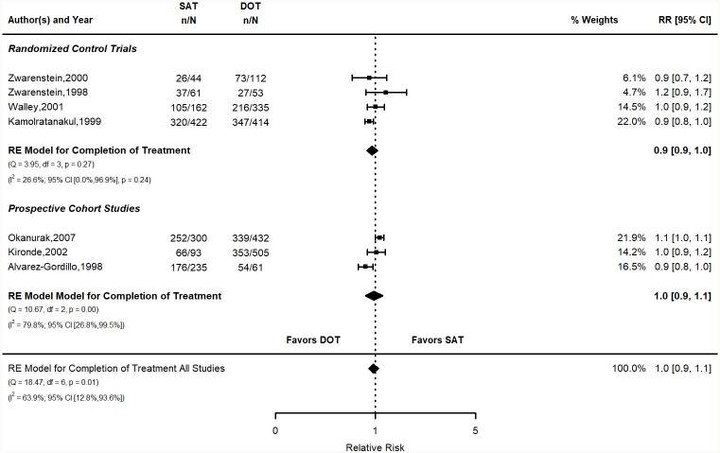An attempt to reproduce a previous meta-analysis and a new analysis regarding the impact of directly observed therapy on tuberculosis treatment outcomes
 Image credit: PLOS One
Image credit: PLOS One
Abstract
Directly observed therapy (DOT) is almost universally used for the treatment of TB. Several meta-analyses using different methods have assessed the effectiveness of DOT compared to self-administered therapy (SAT). The results of these meta-analyses often conflict with some concluding DOT is superior and others that there is little or no difference. Meta-analyses can guide policymaking, but such analyses must be reliable. To assess the validity of a previous meta-analysis, we tried to reproduce it. We encountered problems with the previous analysis that did not allow for a meaningful reproduction. We describe the issues we encountered here. We then performed a new meta-analysis comparing the treatment outcomes of adults given treatment with SAT versus DOT. Outcomes in the new analysis are loss to follow-up, treatment failure, cure, treatment completed, and all-cause mortality. All data, documentation, and code used to generate our results is provided. Our new analysis included four randomized and three observational studies with 1603 and 1626 individuals respectively. The pooled relative risks (RR) are as follows: Lost to follow-up (RR = 1.2, 95% CI 0.9, 1.7), Treatment Failure (RR = 1.1, 95% CI 0.6, 2), Cure (RR = 0.9, 95% CI 0.8, 1.1), Treatment Completion (RR = 1, 95% CI 0.9, 1.1), Mortality (RR = 0.9, 95% CI 0.6, 1.3). Based on data from our new meta-analysis, the magnitude of the difference between DOT and SAT for all reported outcomes is small, and none of the differences are statistically significant.